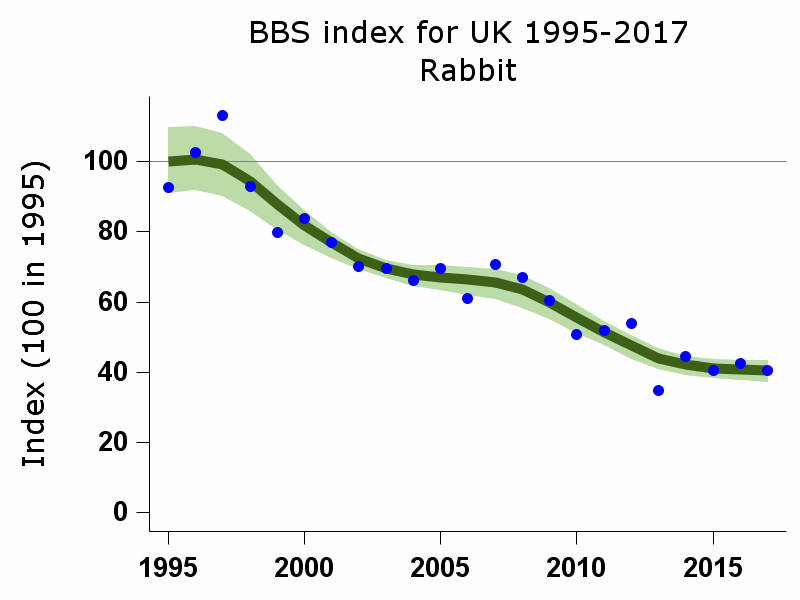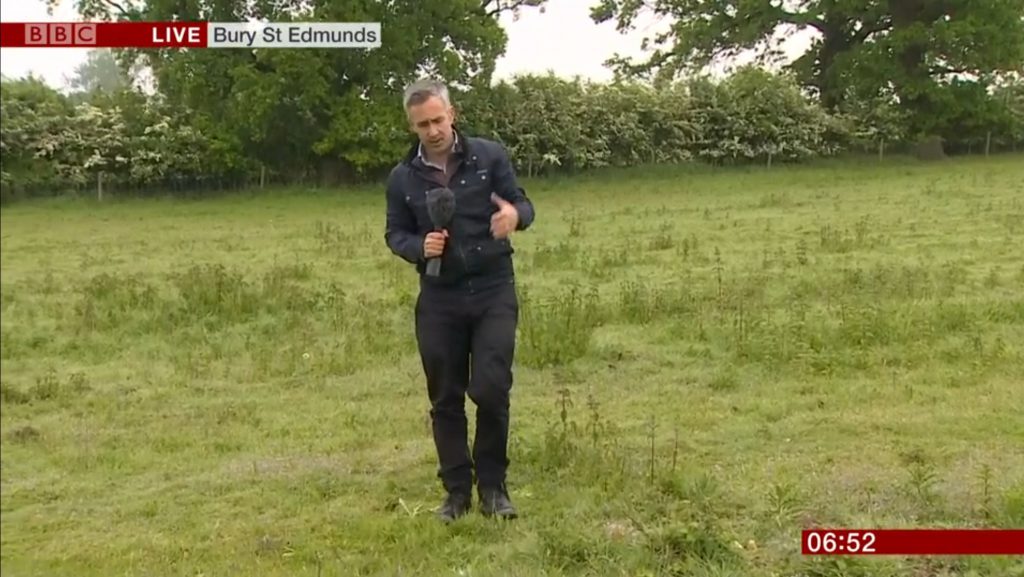Wild Rabbit Population Declines 60% in 20 years
You may have caught a little snippet in the media today about the decline in the wild rabbit population in the UK.
Survey results from The British Trust for Ornithology (they study mammals too) show that the population of wild rabbits has declined 60% in the last 20 years, and 5% in the last 12 months.

You can view more population statistics on the BTO website here.
It’s normal for the population to fluctuate, but this long term decline is more worrying. It’s not just about the rabbits themselves, but also the role they play with in the wider ecosystem. The BBC interviewed Paul Stancliffe (BTO) who explained that this level of decline would also have an impact on other species, for example rare bird species that nest in the short cropped grass habitats created by wild rabbit grazing. Yes, those wild rabbits are doing an important job!
Why has the wild rabbit population declined?
The main cause is Viral Haemorrhagic Disease (VHD), which is something that’s been around since the early 90’s. Although other causes like Myxomatosis played a part too.
You may have already heard about a new strain of VHD, called VHD2. It’s not just our pets that these diseases effect but also the wild population. Luckily for our pet rabbits we can vaccinate to protect them from disease. If you are in the UK and haven’t yet vaccinated your rabbit speak to your vet about it asap!
How can you help
 The Mammal Society have developed an app called the Mammal Mapper, which will help them access population numbers and monitor long term trends. They’d like you to download and use it to record sightings of wild rabbits.
The Mammal Society have developed an app called the Mammal Mapper, which will help them access population numbers and monitor long term trends. They’d like you to download and use it to record sightings of wild rabbits.
Fiona Mathews, Chair of the Mammal Society and Professor of Environmental Biology at Sussex University explains “What we need people to do is to go on a walk or bike-ride (an evening outing of about 45 minutes is ideal) and record the mammals they see. By recording the route taken, the App will let us work out the densities of animals in different habitats. This is a unique feature of the Mammal Mapper app and will be hugely valuable for conservation. Previously we had no way of working out whether a sighting was submitted because an animal was common, or because people were excited to see it because it was rare. It was also difficult to pin down the precise habitat where the mammal was seen. New technology means that this is all now really easy on a smart-phone.”.
So if you are out foraging for your rabbit or just enjoying an evening stroll, download the app and record any wild rabbits you spot.
Tags: wild



I saw this article on the television a few weeks ago and decided to keep a check on a field in the village where I live. For over 40 years now I have enjoyed watching the rabbits running round under the bushes as I have waited for the bus to work. I retired 3.5 years ago so obviously have not been watching them the same every morning. However, after I saw the news the other week it made me start checking again and I saw 2 a few weeks ago and when I have looked since I cannot see any. There is a distinct lack of them now and I know it was reported that they are dying underground. There was always so many that I am now quite shocked and upset in a way as they were always a lovely sight to see.
Very interesting read, thanks for that! The decline of wild rabbist is really sad but it’s definitely great that people develope apps like the one you mentioned in order to help!
I go bird watching every chance l get…last week l spent a weeks holiday on a farm up in Norfolk…in the week l walked miles around the lanes dissecting the huge fields of Norfolk….l saw one Hare and no rabbit what so ever….this can’t be normal
Been worried about the lack of rabbit sightings in the past year. Walk regularly in Richmond Park London and have not seen a single rabbit for some time. No one else seems to be worrying!
hi my name is mark de la pole i have lived in sussex most of my life 30 years plus i have been involved in a lot of countryside activity and i am concerned about to me and a lot of people that there is a masive decline in the rabbit population and my biggest fear is that the massive increase of buzzards and kites is now paying a heavy toll since all these birds of prey are now protected from being shot by game keepers can you please contact me
Whilst buzzards and kites are natural predators, as far as I’m aware they aren’t any higher than historical numbers. It’s been the diseases that wipe out whole rabbit colonies in large numbers.
Hi where has this new disease come from ? Is it man made does it affect hares why has it not made it on country file .the population in Pl255sq area has had a 95% decline with mixy playing it’s part I fear it will take years for any increase in numbers if any as sets collapse with not being used
It’s a new variant of VHD, which was first identified in the 1980’s. It’s a natural mutation. It doesn’t effect Hares as they are a different species. I’d suggest an email to countryfile if you think it would make a good topic. I think rabbits are often seen as pests so don’t always get as much interest as other species.